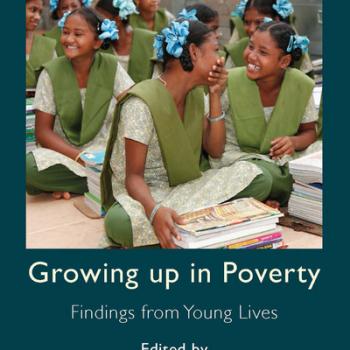Publication Information

Drawing on the data from Young Lives, comparing the daily lives of two cohorts of children between two rounds of survey data gathered in 2002 and 2009, this chapter aims to map broad trends in the change of children's time use. The chapter combines the analysis of surveys with analysis of qualitative data: the Older Cohort were aged 12?13 when they were first interviewed in 2007, and the Younger Cohort children were aged 9?10 when interviewed for the third time in 2010. The comparison between the two types of data is not exact: one to two years? variation may particularly affect girls? activities, because their tasks differ once they have reached puberty. It is also possible that the process of being involved in Young Lives research over the years has raised awareness and may influence community attitudes to children?s formal schooling. Overall, there is reason to believe that views are changing. The chapter draws on a case study of a rural community in each country, selected because they have experienced recent infrastructural improvements and had relatively high rates of children involved in various forms of work in 2007, and also because of the introduction of social protection schemes to provide employment: the Mahatma Gandhi National Rural Employment Guarantee Scheme (MGNREGS) in India and the Productive Safety Net Programme (PSNP) in Ethiopia. The purpose is not to make a direct comparison between two countries, but to explore the pace of change for children in middle childhood in two differing settings. There are some additional limitations. First, the Young Lives sample is typically drawn from poorer communities and thus is not representative of the country as a whole. Second, it would be wrong to generalize from the cases presented, but the descriptive statistics give an indication of trends related to children?s activities in Ethiopia and Andhra Pradesh, and the case studies have been chosen to analyse some of the processes and practices that lie behind trends, to explore what these changes mean for children?s daily lives, from their viewpoints. These may not be typical communities but they give some insight into experiences at the local level. Third, we have focused here on children?s descriptions of their activities and experiences. Household characteristics, particularly in Andhra Pradesh, may affect attitudes to formal education ? the Younger Cohort children have younger and more educated parents who may consider school to be important, when compared to the parents of Older Cohort children, who considered land, and income from land, more important.
The final published version of the article is available on the publisher's website.
Reference:
Morrow, Virginia, Yisak Tafere and Uma Vennam (2014) 'Changes in Rural Children's Use of Time: Evidence from Ethiopia and Andhra Pradesh, India', in Michael Bourdillon and Jo Boyden (eds) Growing up in Poverty: Findings from Young Lives (pp. 139-160). Basingstoke: Palgrave Macmillan.

Drawing on the data from Young Lives, comparing the daily lives of two cohorts of children between two rounds of survey data gathered in 2002 and 2009, this chapter aims to map broad trends in the change of children's time use. The chapter combines the analysis of surveys with analysis of qualitative data: the Older Cohort were aged 12?13 when they were first interviewed in 2007, and the Younger Cohort children were aged 9?10 when interviewed for the third time in 2010. The comparison between the two types of data is not exact: one to two years? variation may particularly affect girls? activities, because their tasks differ once they have reached puberty. It is also possible that the process of being involved in Young Lives research over the years has raised awareness and may influence community attitudes to children?s formal schooling. Overall, there is reason to believe that views are changing. The chapter draws on a case study of a rural community in each country, selected because they have experienced recent infrastructural improvements and had relatively high rates of children involved in various forms of work in 2007, and also because of the introduction of social protection schemes to provide employment: the Mahatma Gandhi National Rural Employment Guarantee Scheme (MGNREGS) in India and the Productive Safety Net Programme (PSNP) in Ethiopia. The purpose is not to make a direct comparison between two countries, but to explore the pace of change for children in middle childhood in two differing settings. There are some additional limitations. First, the Young Lives sample is typically drawn from poorer communities and thus is not representative of the country as a whole. Second, it would be wrong to generalize from the cases presented, but the descriptive statistics give an indication of trends related to children?s activities in Ethiopia and Andhra Pradesh, and the case studies have been chosen to analyse some of the processes and practices that lie behind trends, to explore what these changes mean for children?s daily lives, from their viewpoints. These may not be typical communities but they give some insight into experiences at the local level. Third, we have focused here on children?s descriptions of their activities and experiences. Household characteristics, particularly in Andhra Pradesh, may affect attitudes to formal education ? the Younger Cohort children have younger and more educated parents who may consider school to be important, when compared to the parents of Older Cohort children, who considered land, and income from land, more important.
The final published version of the article is available on the publisher's website.
Reference:
Morrow, Virginia, Yisak Tafere and Uma Vennam (2014) 'Changes in Rural Children's Use of Time: Evidence from Ethiopia and Andhra Pradesh, India', in Michael Bourdillon and Jo Boyden (eds) Growing up in Poverty: Findings from Young Lives (pp. 139-160). Basingstoke: Palgrave Macmillan.

